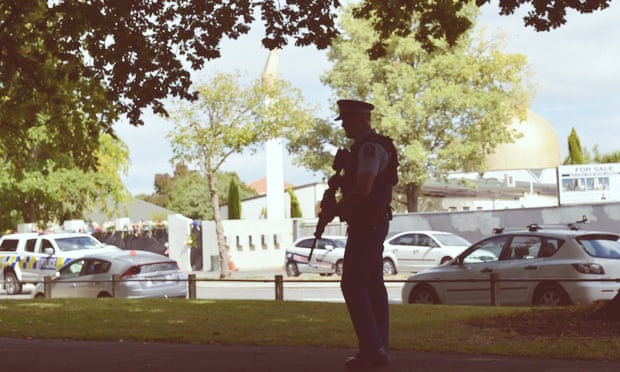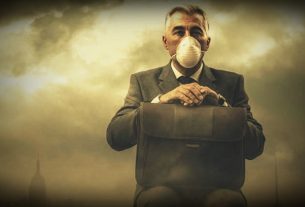Muslim associations have expressed despair that no one in government heeded their warnings about a rise in racism and violence
As the alleged killer sits in an isolated, maximum security jail cell on the outskirts of Christchurch, many people in New Zealand are wondering how an alt-right extremist who allegedly amassed an arsenal of military grade weapons went undetected for so long.
Holed up in a wooden bungalow in the seaside town of Dunedin, the alleged shooter was an active member of the local gun club and pumped weights at a South Dunedin gym. He was quiet, but not reclusive, and appears to have made no effort to hide his obsession with military grade weaponry.
New Zealand Muslim associations have expressed despair that no one in government heeded their warnings about a rise in racism and violence towards their community over the last five years, especially in the Pakeha (New Zealand European) dominated South Island. Historically the North Island has a far higher Māori, Pasifika and Asian community.
Jarrod Gilbert, a sociologist and expert on criminal justice and gangs, who lives in Christchurch and teaches at the University of Canterbury, says Christchurch and the wider South Island have a long history of “skinhead” white supremacism stretching back to the 1970s.
Gilbert says the earlier iterations of the alt-right in the 1990s were far more visible than today’s isolationists; they were “thugs” standing on street corners, yelling abuse at people of colour. While the numbers of traditional skinheads have decreased in the region, he said the numbers of “bedroom” alt-right members has swollen, emboldened by the election of far-right global leaders, and the unwillingness of some to crack down on their warped ideology and violence. Estimates for active alt-right members in New Zealand hovers around the 250 mark, according to experts.
“The alt-right that [Brenton] Tarrant emerged from is an entirely new phenomena,” said Gilbert.
“They exist in bedrooms, on internet forums and their communities aren’t in a specific geography, they are international.
“This is the problem we face. When there were thugs hanging out on street corners in daylight they were quite easy to quantify. The online communities are impossible to estimate, and ascertain the size of the threat.”

Gilbert described the shooter as someone who was “radicalised online, and around the world”, saying: “This wasn’t so much a local issue, as much as it was an international issue that happened locally.”
Writing the day after the attack, the New Zealand race relations commissioner, Susan Devoy, said Muslims had been facing “hatred, abuse and extremists” in the country for years.
She wrote in the Spinoff that police should monitor white supremacists “as closely as they monitored other extremists or criminals”.
“Do not tell me that March 15 was a surprise. Because hatred lives in New Zealand. And yesterday it walked around the streets of Christchurch with an automatic weapon.”
While the Christchurch gunman claimed to not be a member of any group, the country does have a history of far-right activism and violence.
Paul Spoonley, an expert in far-right politics from New Zealand’s Massey University, estimates there could be between 200 and 250 active members of far-right groups in the country including the New Zealand National Front, the Dominion Movement and Right Wing Resistance.
In 2017 members of the National Front – a white nationalist group – clashed with protesters outside parliament in Wellington, while a University of Auckland student group called the European Students Association was accused of promoting material “typical of white supremacist nationalist groups”.
More recently the Dominion Movement, a “youth-oriented brotherhood of nationalists” which shares ideological similarities with the European identitarian movement, has been active in the country.
Another group, Right Wing Resistance, was founded by the former leader of the National Front, Kyle Chapman, in 2009. The group held “crimewatch patrols” in Christchurch, and Chapman boasted the city was at the centre of a “white pride” revival.
In the wake of the Christchurch attack, Spoonley has been critical of New Zealand’s complacency when it comes to the risk of far-right violence, saying there’s little formal information gathering on the groups within the country.
“I’m reliant on the stuff that I can gather informally [but] I have to admit it’s a soft touch approach,” he said.
“So when you ask me how many people are involved or how organised these groups are, it is only a guess on my part, there is very little monitoring of their activities.
“We’ve all been caught out by this.”
Christchurch, Spoonley says, has historically been the centre of New Zealand’s far right. In the late 1980s, his research found more than 70 far-right groups – many based in the city – made up of a mixture of skinhead, neo-Nazi and extreme nationalists.
And the city has a history of violent crime associated with the far right. In 1989 a skinhead named Glen Mcallister shot an innocent bystander, Wayne Motz, before walking to a local police station and shooting himself. At his funeral, two skinheads held a Swastika flag above his grave.
Spoonley says the city’s demographics have changed since the devastating earthquakes in 2011 because of the role migrant communities played in its rebuilding, but that far-right groups still had “factions” within the city.
Yet Paul Buchanan, a security expert at 36th Parallel says it would have been almost “impossible” for police or security services to identify the alleged shooter in advance, as he planned his attack in “absolute secrecy” and it is understood he was not a member of any of the active white supremacist groups in New Zealand.
Yet, Buchanan says, New Zealand’s security agencies investigated and infiltrated the Muslim community, animal rights groups and environmental organisations, while the most deadly man in New Zealand lined up a bullseye in a brown paddock at the bottom of the country and practised his aim.
“In the panorama of threats, the lady at the top of a tree preventing a forestry tractor from knocking it down is probably a little less concerning than a skinhead.”





